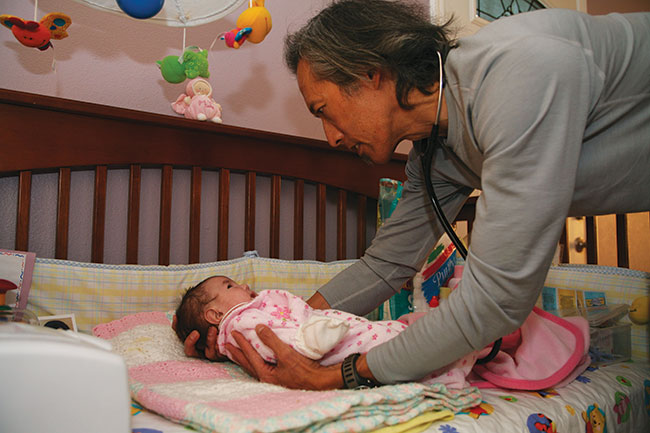
Compassionate Care
An inspiring organization where everyday decisions mean life or death.
-
CategoryPeople
-
Written byZoë Alexander
It may go without saying that the staff of Providence TrinityCare Hospice isn’t afraid of dying. Providence is a non-profit organization that provides quality end-of-life care to terminally ill patients, regardless of expense. With multiple offices, including one here in Van Nuys, they have served Los Angeles and Orange County since 1977.
Their comprehensive programs include patient care, palliative care (pain management), The Necessities of Life, which provides assistance with essential expenses, and The Gathering Place, a community bereavement center that offers counseling and support. As director of annual giving Robin Steen puts it, “Hospice care doesn’t stop when a loved one passes. It continues to help the family grieve and heal.”
Providence’s care is guided by a holistic vision. If a patient chooses to stay in his or her home, often a compassionate decision as well as a practical one, Providence will assemble a team that includes physicians and nurses as well as a social worker and a chaplain.
Chief medical officer Dr. Glen Komatsu believes that “pain and suffering are not always physical.” Therefore, all areas of a patient’s case are addressed. Each patient’s team meets weekly to touch base with patient and family and modify their needs. Such inter-disciplinary teamwork contributes to thorough care that ultimately promotes quality of life. Executive director Barbara J. Roberts says, “We don’t do enough to prepare ourselves or our loved ones for death, and that’s what hospice does.”
Providence’s TrinityKids Care is one of the few pediatric hospice programs in California, so demand is high. Last year the program cared for 115 children. This year, so far, they’ve helped 120 and anticipate reaching 150 by the end of the year. And because children’s illnesses are often more complicated, pediatric medical care can be extremely expensive. With hospital stays adding emotional and financial strain to a family dealing with an ill child, Providence’s goal is to do what it takes to get the patient home and keep them there.
Dr. Glen Komatsu shares the best advice he ever received: “Don’t just do something; sit there.” Typically, physicians are taught to jump to action and diagnose, but working with hospice patients requires caregivers to be still and listen.
As far as facing the day-to-day often emotional challenges, Barbara J. Roberts sums it up by saying she deals with it “one tear at a time.”











